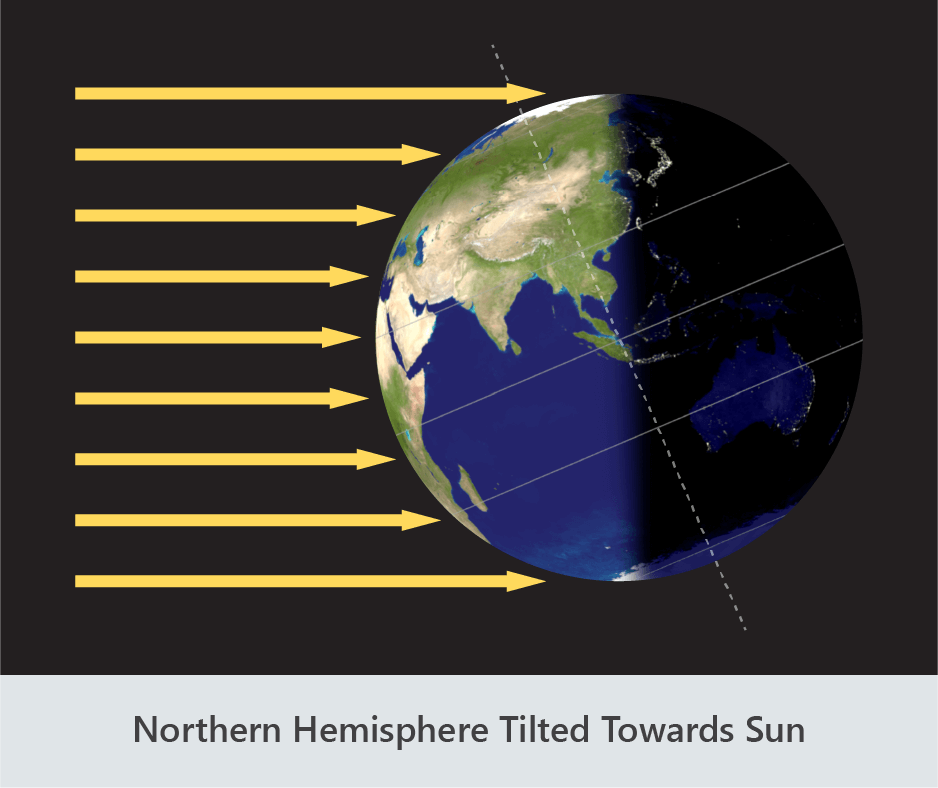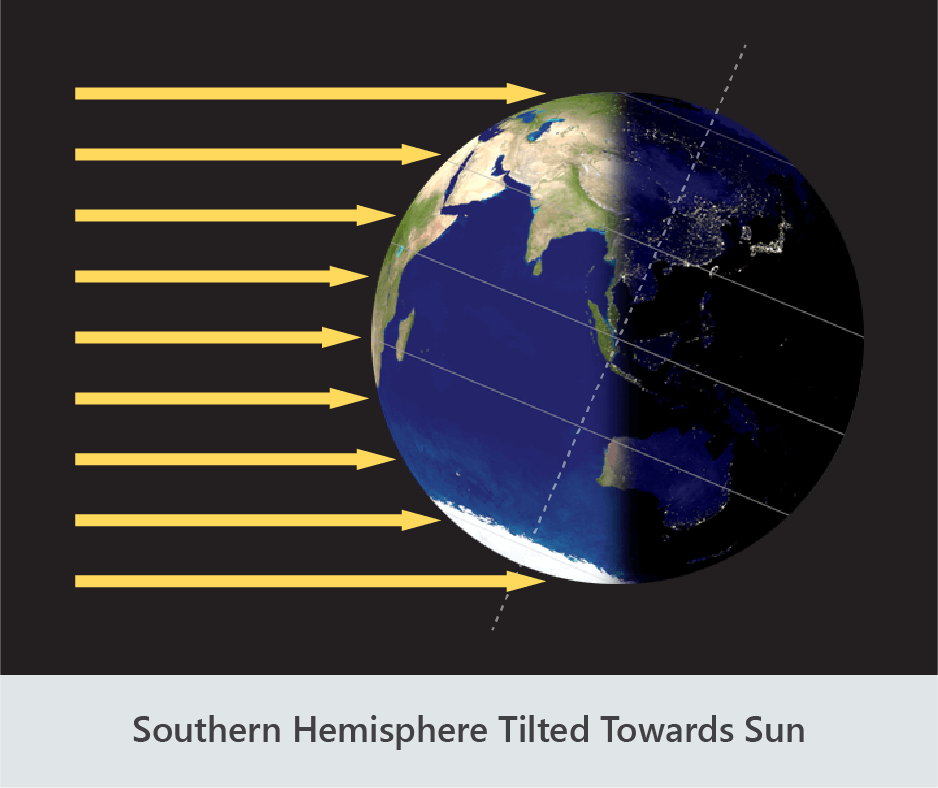Earth’s Tilt – Day Length and Seasons
6 Topics | 5 Quizzes
Solstices and Equinoxes
9 Topics | 8 Quizzes
Phases of the Moon
8 Topics | 7 Quizzes
Lunar and Solar Eclipses
8 Topics | 7 Quizzes
Tides
7 Topics | 6 Quizzes
Earth’s Natural Resources
5 Topics | 4 Quizzes
Renewable Resources
6 Topics | 5 Quizzes
Non-Renewable Resources
5 Topics | 4 Quizzes
Renewable and Non-Renewable Energy
12 Topics | 11 Quizzes
The Water Cycle
7 Topics | 6 Quizzes
2 | Day and Night

2 | Day and Night
Day and Night
- Earth’s rotation on its axis is what gives us day and night.
- The part of the Earth that is receiving sunlight is experiencing daylight (day).
- The part of the Earth that is not receiving sunlight is experiencing darkness (night).
- Earth rotates towards the east. In other words, earth rotates in an anticlockwise direction when viewed from above the north pole.
- This makes the sun appear to move from east to west.
- Therefore, people that are further to the east will see the sunrise before people that are further to the west.
- Since Earth rotates on a tilt relative to the sun, one hemisphere experiences more sunlight than the other.
- For the hemisphere tilted towards the sun:
- More than half of the hemisphere is experiencing daylight at any given time.
- Days are longer and nights are shorter.
- For the hemisphere tilted away from the sun:
- Less than half of the hemisphere is experiencing daylight at any given time.
- Days are shorter and nights are longer.


The hemisphere tilting towards the sun experiences more daylight than the hemisphere tilting away from the sun.
(Images: Commons sibi, Wikimedia Commons)
Quizzes
